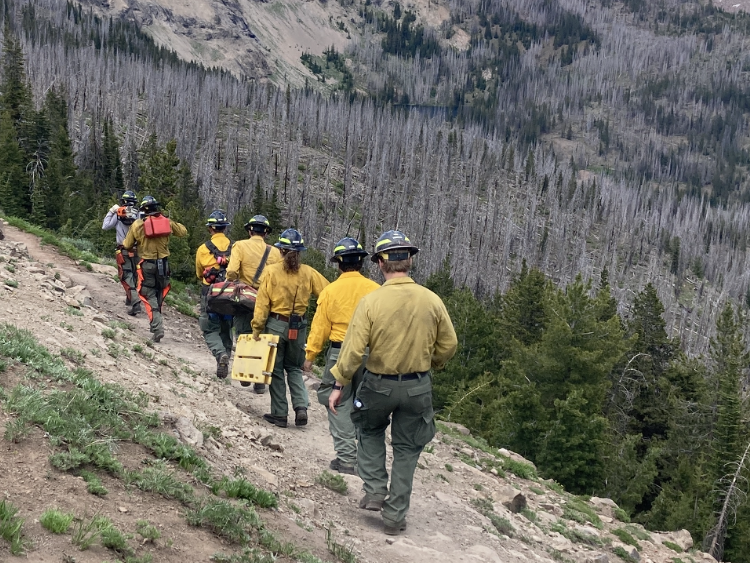Off the Beaten Path: I hiked the Whistle Punk Trail
Published 1:11 pm Friday, September 22, 2023

- Moultrie
As reported in the Blue Mountain Eagle on Sept. 6, the experienced long-distance hiker Riley Gill recently completed a hike on the Blue Mountains Trail, a 530-mile trek that connects the major mountain ranges in Northeast Oregon, and became the first to travel the route in reverse, starting from John Day.
The only way I could travel that route would be by helicopter.
I did travel vicariously, experiencing sweaty palms when Gill encountered the “snow cornice.”
I have, however, hiked the Whistle Punk Trail.
My recent adventure began with my “significant birthday.” Family proposed a reunion/birthday celebration. I’d pick the location/activity, and the family offered to handle the rest.
For the location, I chose the Gifford Pinchot Forest in the western Cascades of Washington, the forest of my childhood.
First stop — the Wind River Arboretum, where I’ve informally tracked for 50 years the progress of trees. The arboretum, established in the early 1900s, tested trees from around the world to replace trees burned in forest fires. A lesson foresters learned — in time, the introduced trees failed. After a century, the neighboring forest showed the success of native trees — towering above most of the test trees.
Hiking through the arboretum, the air smells fresh with the scent of moss, fern and conifer bark. A deep breath — crisp air seems to drain out worry, jitters and anxiety, replacing them with peace, mental clarity and hope.
“What’s that tree, Grandma?” asked a child.
The ground is covered with cones the size of a thumbnail. Children scanned the treetop, drooping like a buggy whip.
“It’s a hemlock,” I said, showing them a trail guide book with common names and the genus and species.
A puzzle: A hemlock (Tsuga) has tiny tree cones. Sugar pine (Pinus) cones grow up to a foot long. Yet both seeds grow tall trees.
The Douglas-fir, the most common tree in the forest, is not a true fir (Abies). Douglas-fir’s genus, Pseudotsuga — false hemlock. And then there’s the cedars — multiple “cedars.” The Western red-cedar — not really a cedar. It’s a Thuja and important to Native tribes.
Next adventure — the nearby Whistle Punk Trail.
Whistle punk — a term from logging days. The whistle punk sounded the whistle alarm when the loggers hooked up a log and were ready to move it — an alert to loggers to watch out should something break loose.
With interpretive signs and relics, the Whistle Punk Trail loop provided a blend of logging history and nature hike. The trail provides about 1.5 miles of flat forest, an easy meandering path for our family group — young to elderly, spry to slow. The Forest Service reported about five years ago that crews cleared the trail of fallen trees and restored the Whistle Punk Trail to ADA-accessibility.
My mantra when traveling: Don’t get sick, hurt or lost. Plan ahead.
Whomp! Down I went. “Grandma fell!” went out the cry. I stood up feeling foolish.
“I caught my toe on a tree root.”
The root patrol jumped into action. The kids spread out identifying every tree root around.
I called off the root patrol. “I’ll stick to the middle of the path. No tree roots there.”
We continued our journey along the Whistle Punk Trail, some taking photos, sketching, journaling or pausing to bask in the woodland atmosphere. Too soon, time to leave.
Mountain hikers provide vicarious travel opportunities. Others enjoy a sense of excitement from forest accessibility: children, elderly, veterans, those with a disability or recuperating from injury. Where to next?









